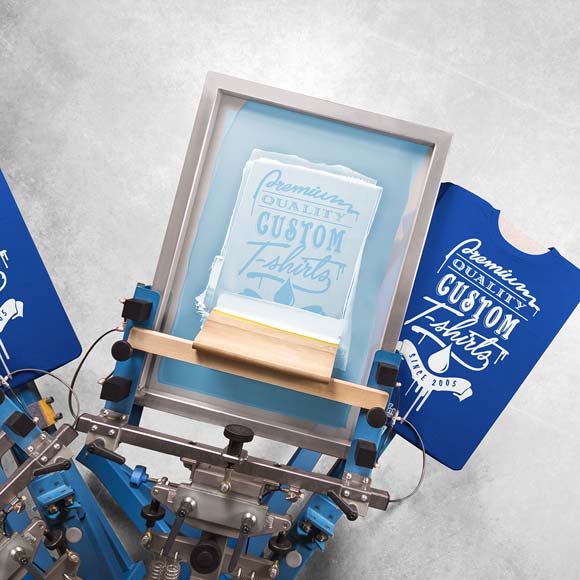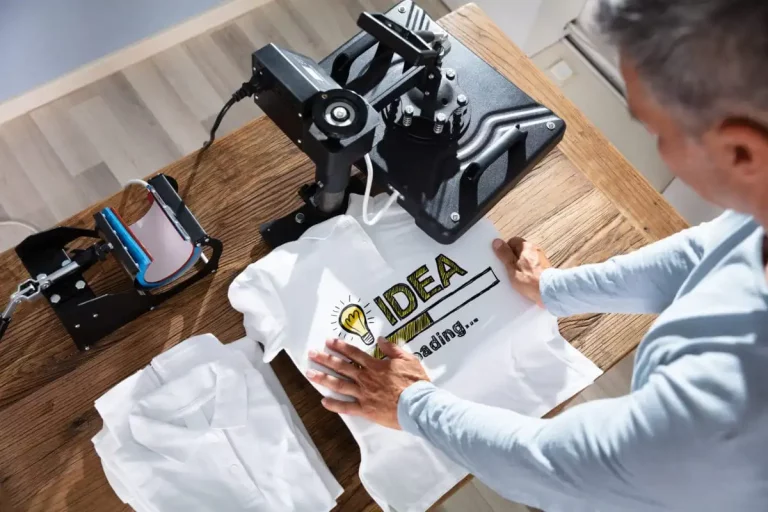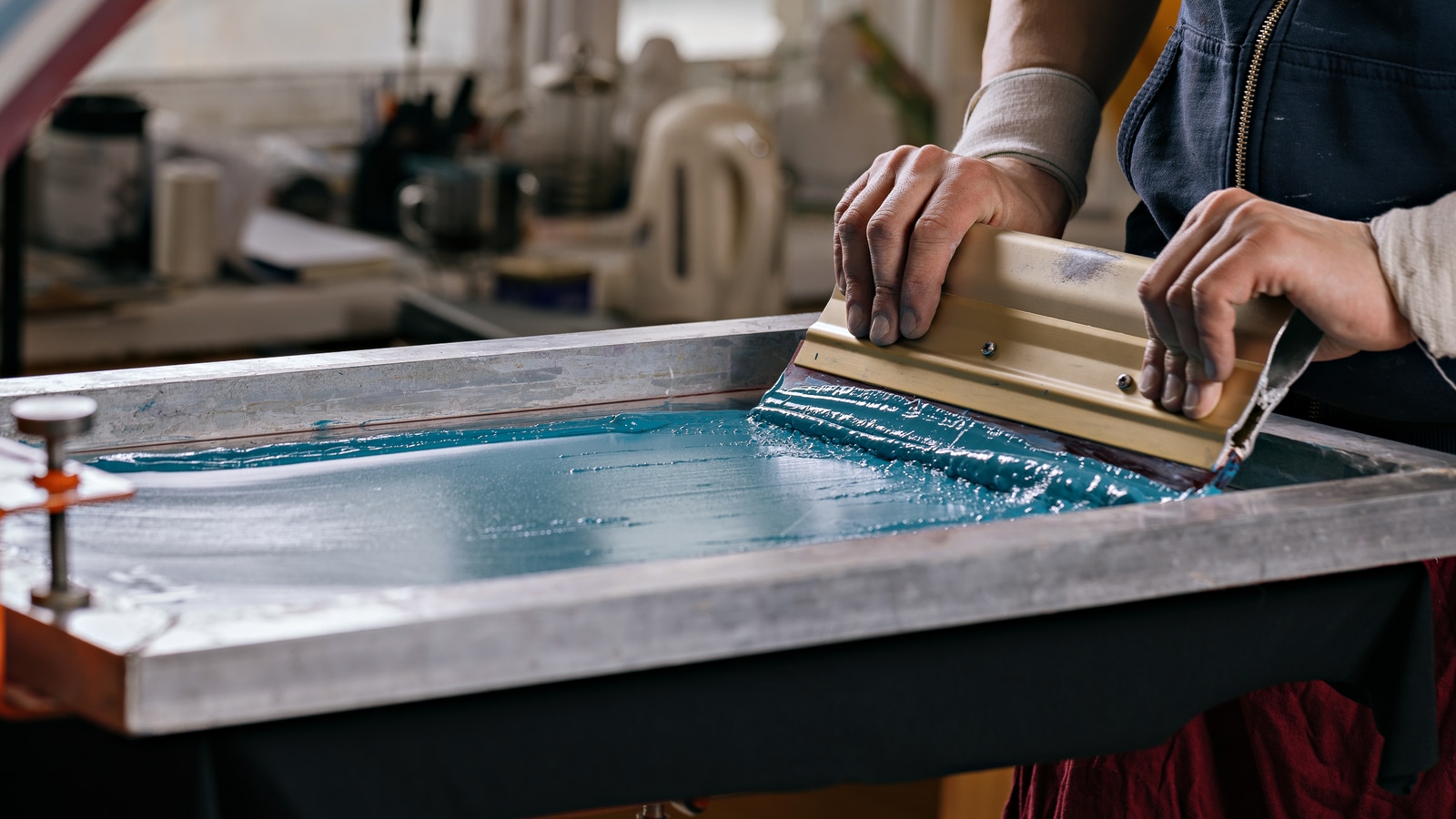Detailed Silk Screen Printing for Custom Art Apparel
Wiki Article
Screen Printing Uncovered: Whatever You Required to Know Regarding Tee and Garment Printing Techniques
Screen printing is a remarkable technique that incorporates art with method, using countless opportunities for creative thinking. Ready to check out the vital components that make display publishing an art form?
The Basics of Screen Printing: How It Functions
When you dive right into screen printing, you'll find it's both an art and a scientific research. At its core, display printing includes developing a stencil, or screen, that enables ink to pass with only in particular locations.Position the display over the fabric, after that utilize a squeegee to press ink with the display onto the garment. Each action is necessary, and grasping them will certainly elevate your display printing abilities, transforming easy garments into distinct, expressive items.
Kinds Of Display Printing Strategies
When you realize the fundamentals of screen printing, it's time to explore the numerous strategies that can elevate your layouts. One popular technique is typical screen printing, where ink is pushed with a stenciled display.One more alternative is plastisol printing, known for its durability and vivid shades, making it a favored for lots of brands. Experiment with halftone printing to develop slope results and complex styles.
Essential Devices for Display Printing
To achieve spectacular results in display printing, having the best tools is basic. Initially, you'll need a durable screen printing framework, which holds the mesh that moves your layout onto the garment. Next, purchase premium squeegees; these are vital for using ink uniformly across the display. You'll also need an excellent direct exposure unit to create your screens, along with a washout booth for cleaning them after use. A trusted warmth resource, like a conveyor dryer or warmth press, is critical for treating your prints to ensure durability. Do not forget an appropriate work space, furnished with tables and storage for your materials. Lastly, protective equipment, such as handwear covers and masks, will keep you risk-free from chemicals and inks. With the right tools, you'll be well on your means to producing professional-quality prints.Choosing the Right Inks and Materials
When selecting inks and materials for display printing, you need to take right into account the kind of ink that functions finest for your job. Assume regarding fabric compatibility to guarantee your designs look last and great long. Additionally, discover environment-friendly ink alternatives to make your printing process much more lasting.Sorts Of Display Inks
Picking the appropriate screen ink is crucial for accomplishing vivid, sturdy prints that meet your job's demands. There are several sorts of screen inks to analyze. Plastisol ink is preferred for its adaptability and simplicity of use, giving superb color opacity on dark fabrics. Water-based ink, on the various other hand, offers a softer feel and is environment-friendly, making it perfect for those seeking to decrease their environmental impact. Discharge inks eliminate dye from the fabric, causing a soft, vintage appearance however need particular handling. Specialized inks, such as glow-in-the-dark or metal, can add one-of-a-kind impacts to your layouts. Evaluate your project requirements and pick the ink that aligns best with your wanted result.
Fabric Compatibility Factors To Consider
Comprehending material compatibility is essential for accomplishing high-quality display prints, especially since various products react distinctly to various inks. Constantly test your inks on sample material to guarantee they adhere properly and keep color stability. Furthermore, keep in mind that textile weight and appearance can affect the final result, so choosing the appropriate ink and material combination is vital for your task's success.Eco-Friendly Ink Options
Environmentally friendly inks are coming to be a prominent option for display printers that desire to reduce their ecological influence while maintaining high quality. When choosing inks, consider water-based inks, which are much less damaging and easier to clean up contrasted to typical solvents.Additionally, try to find inks made from renewable sources, such as soy or vegetable-based options. By picking the appropriate inks and materials, you'll not just produce magnificent layouts however likewise contribute to an extra sustainable printing procedure. Make the switch, and your prints will certainly mirror your dedication to the environment!
Preparing Your Layout for Display Printing

Submit Layout Demands
To guarantee your layout looks vibrant and sharp on fabric, you'll require to pay very close attention to submit layout requirements for display printing. Begin with vector documents like AI or EPS, as they can be scaled without losing quality. If you use raster pictures, select high-resolution data, such as TIFF or PNG, preferably at 300 DPI. Avoid making use of JPEGs, as they can shed clarity when resized. Likewise, see to it your layout has a transparent screen printing kit background to prevent undesirable white edges on your prints. Maintain shade settings in mind; CMYK is typical for display printing, so convert your RGB designs accordingly - screen printing kit. By adhering to these guidelines, you'll establish your artwork up for a successful print.Color Separation Methods
Shade separation is a vital action in preparing your layout for display printing, and mastering it can significantly enhance your print quality. You'll need to damage your layout into individual shades, as each shade requires a different screen throughout printing. This precision not just assures exact shade depiction however also enhances the printing procedure.Resolution and Dimension
Achieving the most effective outcomes in screen printing starts with assuring your style has the appropriate resolution and size. Preferably, your art work ought to go to least 300 DPI (dots per inch) for sharp, clear prints. Your final product might look less than professional and pixelated. if you use reduced resolution.When it comes to size, think about the dimensions of your print location. Design your artwork to match the last print size, preferably producing it in the actual dimensions you'll be publishing. This method, you'll stay clear of any kind of unanticipated scaling issues.
Constantly check your design in both vector and raster styles. Vector graphics can be scaled without losing high quality, making them perfect for display printing. Preparing appropriately will guarantee your design looks impressive on every garment!
Step-by-Step Screen Printing Process
Display printing is a dynamic procedure that permits you to create dynamic styles on various surface areas. To begin, you'll require a display, emulsion, and your picked ink. Prepare your screen by cleansing it extensively. Next off, use the solution equally and let it completely dry in a dark area. Once dry, subject your screen to light with your design positioned on it, which will certainly set the solution where the light hits, creating a pattern - screen printing kit.Pour ink onto the display and make use of a squeegee to push the ink through the stencil onto the textile. Raise the display carefully and allow the print dry. You have actually successfully screen printed your layout.
Tips for Successful Display Printing Projects
While you're diving into your screen printing projects, keep in mind that preparation is vital to success. Begin by collecting all your materials-- inks, garments, mops, and screens. A clean office assists avoid undesirable mistakes, so clean prior to you begin.Next, confirm your art work is high-resolution and properly sized for your garment. Evaluate your display for correct direct exposure and tidy it completely to stay clear of smudges. When mixing your inks, adhere to the manufacturer's standards to accomplish the best uniformity.
Throughout printing, apply also pressure with your squeegee for constant outcomes. Do not rush; take your time to verify each print meets your criteria. After printing, allow your garments completely dry totally prior to managing or packaging them.
Lastly, constantly keep a sample of your help future reference. This means, you can analyze your progress and boost your methods with time. Delighted printing!

Regularly Asked Questions
For how long Does It Take to Establish up a Screen Printing Job?
Establishing up a display printing task usually takes around thirty minutes to an hour. You'll prepare the displays, mix inks, and adjust journalism. The time varies based upon intricacy and experience, so remain arranged!Can I Publish on Various Textile Keys In Utilizing the Same Technique?
Yes, you can print on various textile kinds using the very same technique, yet you'll need to change your inks and settings. Some materials soak up ink in different ways, so exploring warranties the most effective outcomes for each material.What Are Usual Errors to Prevent in Screen Printing?
When display printing, stay clear of usual blunders like using the wrong ink, ignoring appropriate exposure times, or missing pre-press checks. Always evaluate your arrangement and maintain clean displays to assure high quality outcomes each time.How Can I Appropriately Tidy and Preserve My Display Printing Devices?
To effectively tidy and preserve your display printing equipment, you ought to frequently wash displays with appropriate solvents, examine squeegees for wear, and ensure all tools are stored dry and dust-free. Uniformity prevents pricey repair services and improves efficiency.Is Display Printing Eco-friendly Compared to Various Other Methods?
Display printing can be more eco-friendly than various other approaches, specifically if you use eco-conscious materials and water-based inks. By selecting sustainable supplies and methods, you decrease waste and reduce your effect on the planet.Screen Printing Uncovered: Every Little Thing You Need to Know About Tee and Garment Printing Techniques
At its core, display printing entails producing a pattern, or display, that permits ink to pass via only in certain areas. Position the screen over the textile, then make use of a squeegee to push ink with the screen onto the garment. One prominent approach is typical display printing, where ink is pushed through a stenciled screen.When picking inks and materials for display printing, you need to take right into account the type of ink that functions best for your project.
Report this wiki page